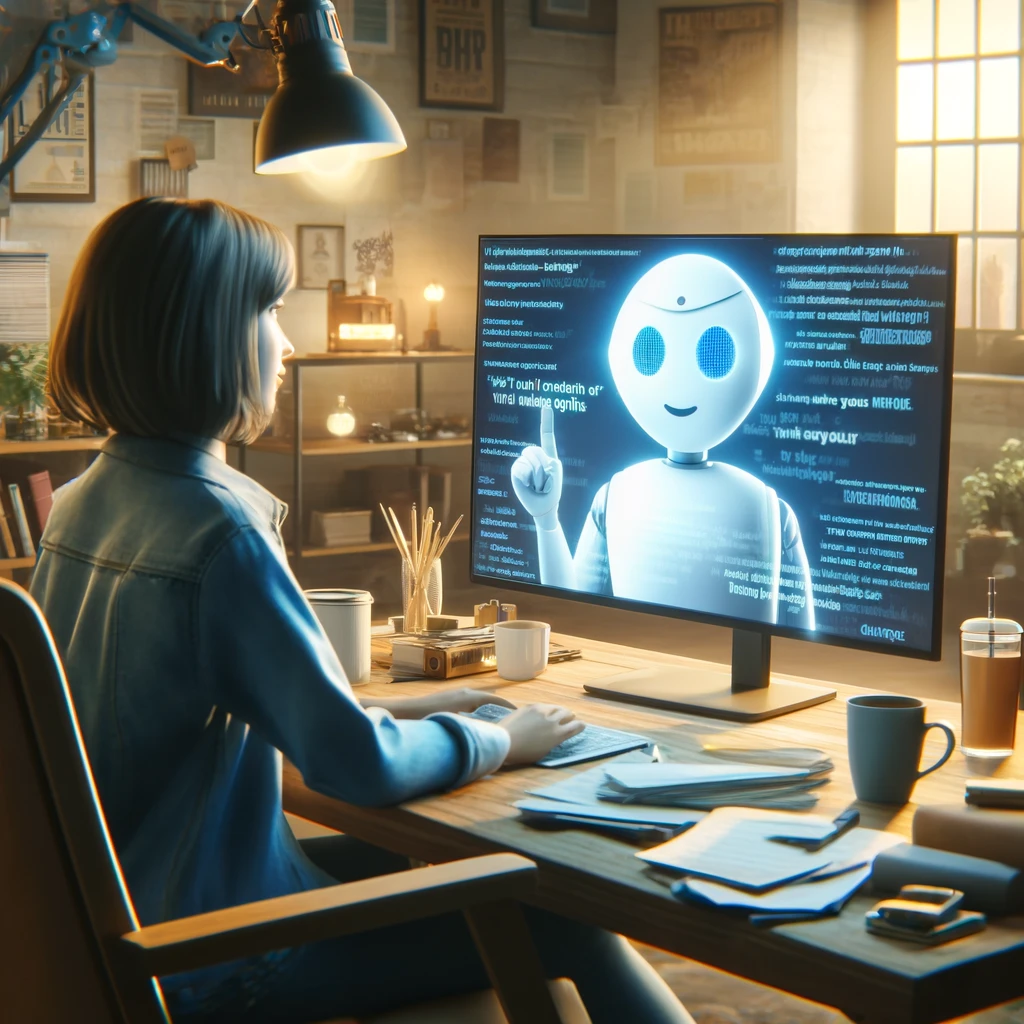Artificial Intelligence (AI) has revolutionized many aspects of modern life, but one of its most fascinating applications is in the realm of storytelling. With the advent of advanced language models like GPT (Generative Pre-trained Transformer), AI is now playing a pivotal role in crafting interactive stories, adaptive narratives in video games, and entirely new forms of digital storytelling. By leveraging the power of natural language processing and machine learning, GPT has not only enhanced traditional storytelling methods but also redefined how audiences engage with narratives. This article explores the transformative impact of AI on storytelling, its applications in various mediums, and the future of narrative experiences powered by GPT.
The Evolution of Storytelling with AI
Storytelling is one of the oldest human traditions, evolving from oral tales and written literature to films, television, and video games. In recent years, AI has emerged as a powerful tool that enhances narrative creation, making stories more interactive and personalized. Language models like GPT have the ability to generate text that is coherent, contextually relevant, and emotionally resonant, allowing writers and creators to experiment with new narrative structures and character development techniques.
Initially, AI in storytelling was limited to simple text-based adventures and rule-based narrative engines. However, the introduction of advanced models like GPT-3 and GPT-4 has changed the landscape dramatically. These models are capable of understanding complex prompts, generating immersive dialogues, and adapting storylines based on user inputs. This adaptability has paved the way for more dynamic narratives that respond to readers’ or players’ choices, creating a more personalized and engaging experience.
Interactive Storytelling and Immersive Experiences
One of the most significant contributions of GPT to storytelling is in the realm of interactive fiction. By allowing readers or players to influence the direction of the narrative, GPT has transformed passive consumption into an active participation experience. Platforms like AI Dungeon and NovelAI utilize GPT models to create text-based adventures where users can dictate actions, dialogues, and decisions, leading to multiple story paths and endings.
This interactive storytelling approach has also impacted the gaming industry. Video games have traditionally relied on branching storylines and pre-scripted dialogues, limiting the scope of narrative exploration. However, with GPT, game developers can now create open-ended narratives that adapt to players’ decisions in real-time. This dynamic narrative generation enables truly immersive gameplay, where characters react organically to players’ choices, and plotlines evolve fluidly without predefined constraints.
For example, in role-playing games (RPGs), GPT can be used to generate realistic dialogues, non-playable character (NPC) interactions, and spontaneous story arcs. By leveraging natural language understanding, GPT can analyze players’ inputs and generate responses that align with the characters’ personalities and the game’s overarching narrative theme, enhancing emotional engagement and storytelling depth.
Adaptive Storylines in Video Games
Video games are a powerful medium for storytelling, and GPT has taken narrative design to the next level by enabling adaptive storylines. Unlike traditional games that follow linear or branching paths, adaptive narratives change dynamically based on players’ actions, decisions, and emotions. This level of interactivity allows players to shape their own stories, resulting in a personalized experience unique to each playthrough.
GPT achieves this by processing contextual information, such as players’ choices, dialogue history, and in-game events. It then generates story elements that are contextually appropriate, maintaining narrative consistency and emotional continuity. Game developers can use GPT to create responsive characters that remember past interactions, resulting in a more lifelike and immersive world.
Moreover, GPT can generate procedural quests and side stories that adapt to players’ progress and preferences, preventing repetitive gameplay. This adaptive storytelling approach not only enhances replayability but also fosters a deeper emotional connection between players and the game world.
New Forms of Digital Storytelling
Beyond interactive fiction and video games, GPT has unlocked new possibilities for digital storytelling across various mediums. For instance, AI-generated scripts are being used in films, television shows, and web series. By collaborating with human writers, GPT can brainstorm plot ideas, generate dialogues, and even suggest plot twists, accelerating the creative process while maintaining artistic integrity.
Virtual reality (VR) and augmented reality (AR) experiences are also being enhanced by GPT’s narrative capabilities. In VR storytelling, users can interact with AI-driven characters and influence storylines through voice commands and gestures. GPT’s natural language processing allows for fluid conversations, making VR narratives more immersive and interactive.
In social media and digital marketing, GPT is being used to create interactive branded content, personalized ads, and chatbot-driven narratives. These applications allow brands to engage customers through compelling stories tailored to individual preferences, driving customer loyalty and brand identity.
Challenges and Ethical Considerations
While GPT has revolutionized storytelling, it also presents several challenges and ethical considerations. One of the primary concerns is the authenticity of AI-generated narratives. As GPT becomes more advanced, distinguishing AI-written content from human-authored stories becomes increasingly difficult, raising questions about authorship and intellectual property.
Another challenge is maintaining narrative coherence in long-form storytelling. Although GPT excels at generating short dialogues and plot elements, it can struggle with consistency and continuity in complex narratives. Developers must employ advanced techniques such as reinforcement learning and contextual memory to ensure cohesive storytelling.
Ethical considerations also arise when using AI-generated narratives in sensitive contexts, such as historical retellings or cultural storytelling. Ensuring that AI-generated content is accurate, respectful, and free from bias requires careful data curation and ethical oversight.
Conclusion
AI-enhanced storytelling is redefining the narrative landscape, and GPT is at the forefront of this revolution. From interactive fiction and adaptive storylines in video games to new forms of digital storytelling in VR and social media, GPT is transforming how audiences engage with narratives. By enabling dynamic, personalized, and emotionally resonant experiences, GPT empowers creators to explore innovative storytelling possibilities that were once limited by traditional narrative structures.
However, as GPT continues to evolve, it is essential to address the challenges and ethical implications associated with AI-generated narratives. By balancing technological advancement with responsible development, GPT can shape the future of storytelling, creating immersive worlds and unforgettable experiences for audiences worldwide.
Crafting the Future: AI-Driven Storytelling for the Next Generation
As we look to the future, AI’s role in storytelling will only grow, enabling more personalized and interactive experiences that resonate with audiences on a deeper level. By embracing the power of GPT and leveraging its narrative potential, creators can craft stories that transcend traditional boundaries, paving the way for the next generation of digital storytelling. The journey has just begun, and the possibilities are limitless.



Wow! I hope this system can be integrated with games!
I hope what no becas this kill all individuals in AAA-progects
Ya? this is really good technology!😎
games & books gettin cooler👍. future is wild !
ya, writers gotta go up against them AI knockoffs
Maybe maybe should see layter
ai can writing stories? omg so cool! 😎
Dude, that’s insane! Like, two minutes and you got a book! 🤯
u type stuff n it builds a world… huh can’t wait what’s next tbh 👍👍👍👍
heh ai out here makin videos now
Really? i dont hear about thi…
i gave it a shot and gpts storytelling is fire 👍👍so damn immersive!
Maybe… But a lotta the time, it be real predictable. 😅
ai stories? meh, too much hype 🤔 not impressed lol
right, stories without soul